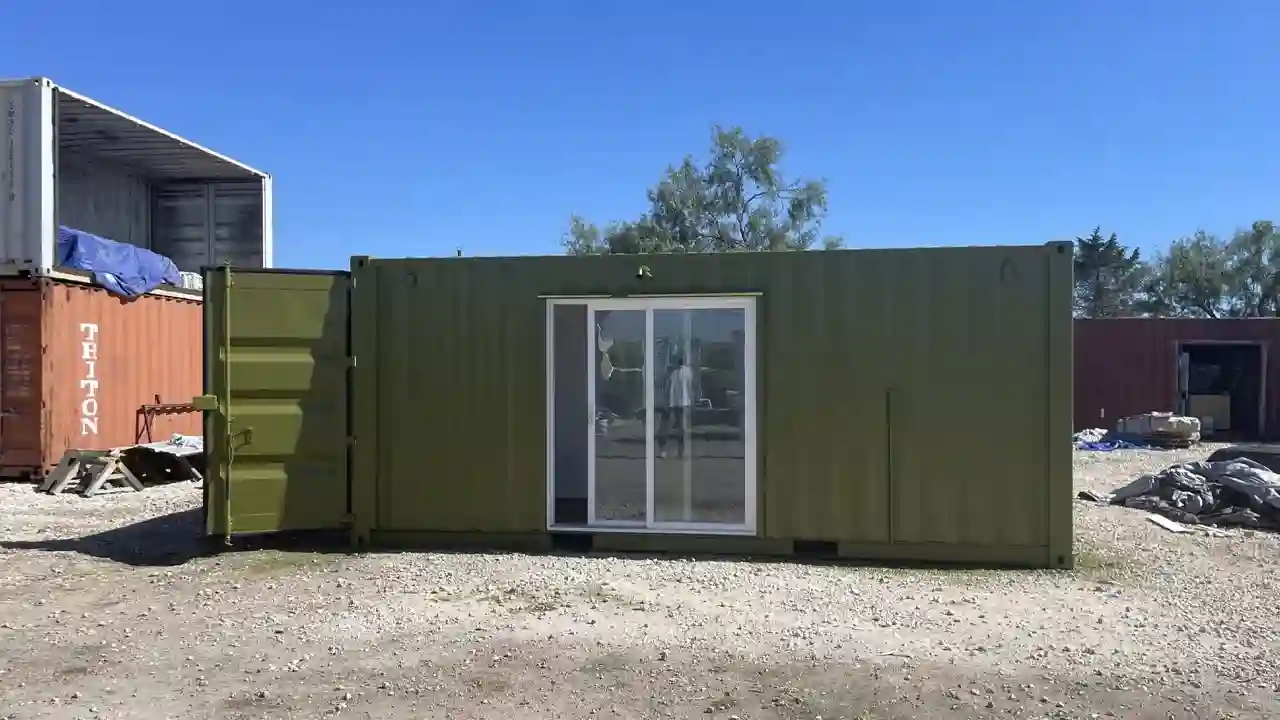13 Jun 2024

Eco-friendly portable buildings are transforming the way we think about construction, offering sustainable solutions for a greener future. These innovative structures, designed by premier portable building manufacturers, provide versatile and environmentally friendly options. In UAE, leading portable building suppliers and manufacturers are pioneering the use of sustainable materials and energy-efficient designs. By choosing green portable buildings, we can significantly reduce our environmental footprint. Whether for residential, commercial, or industrial use, eco-friendly portable buildings offer a practical and sustainable alternative that supports environmental conservation and promotes sustainable living. • Traditional construction methods often involve significant environmental impact due to high energy consumption and resource depletion. • The use of materials like concrete and steel in traditional construction contributes to carbon emissions and pollution. • Construction sites generate large amounts of waste, including debris and packaging materials, which can harm ecosystems and contribute to landfill accumulation. • Transportation of construction materials to and from sites consumes fuel and produces emissions, contributing to air pollution and greenhouse gas emissions. • Traditional buildings may lack energy efficiency, resulting in higher energy consumption for heating, cooling, and lighting, further exacerbating environmental impact. • Sustainable features of portable buildings (energy-efficient, recyclable materials, etc.) • Energy-efficient design: Portable buildings often incorporate energy-saving features such as insulation, double-glazed windows, and LED lighting to reduce energy consumption for heating, cooling, and lighting. • Use of recyclable materials: Manufacturers prioritize the use of recyclable and sustainable materials such as steel, aluminum, and eco-friendly composites in the construction of portable buildings to minimize environmental impact and promote circular economy principles. • Modular construction: The modular design of portable buildings allows for efficient manufacturing and assembly processes, reducing waste generation and construction time while maximizing resource utilization. • Renewable energy integration: Many portable buildings are equipped with renewable energy systems such as solar panels or wind turbines to harness clean and sustainable energy sources, further reducing their environmental footprint. • Water-saving features: Sustainable portable buildings may include water-saving fixtures and rainwater harvesting systems to minimize water consumption and promote conservation efforts in water-stressed areas. • Solar-powered portable buildings: These structures are equipped with solar panels on the roof to harness sunlight and generate electricity, reducing reliance on traditional power sources and lowering carbon emissions. • Green roof installations: Some portable buildings feature green roofs, which are covered with vegetation and plants to provide natural insulation, improve air quality, and reduce stormwater runoff. • Energy-efficient HVAC systems: Green portable buildings may incorporate high-efficiency heating, ventilation, and air conditioning (HVAC) systems to minimize energy consumption and enhance indoor comfort levels. • Recycled and reclaimed materials: Manufacturers utilize recycled and reclaimed materials such as reclaimed wood, recycled steel, and recycled plastics in the construction of green portable buildings to reduce waste and environmental impact. • Passive design principles: Green portable buildings often incorporate passive design strategies such as strategic orientation, natural ventilation, and daylighting to optimize energy efficiency and occupant comfort without relying on active mechanical systems. In conclusion, eco-friendly portable buildings offer sustainable solutions for a greener future. By utilizing energy-efficient features, recyclable materials, and innovative designs, these structures minimize environmental impact while providing functional and versatile spaces. With advancements in sustainable technology and growing awareness of environmental conservation, the demand for green portable buildings continues to rise. Embracing these solutions not only reduces carbon emissions and resource consumption but also promotes healthier and more eco-conscious living environments. As we strive towards a more sustainable future, investing in eco-friendly portable buildings is a crucial step in building a greener world for generations to come. Read more about defferent types of portable buildings in previous blog: "The Ultimate Guide to Portable Buildings".Environmental Impact of Traditional Construction
Sustainable Features of Portable Buildings
Examples of Green Portable Building Designs
Conclusion